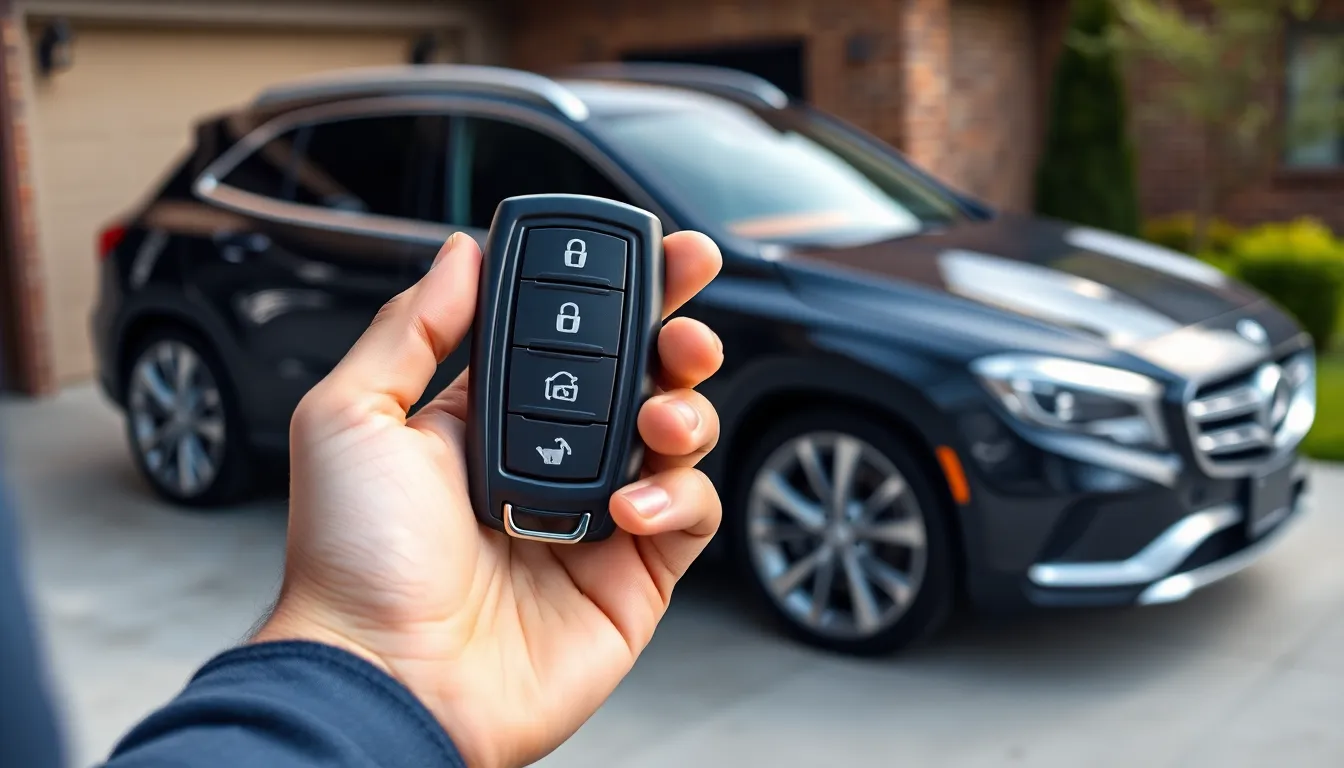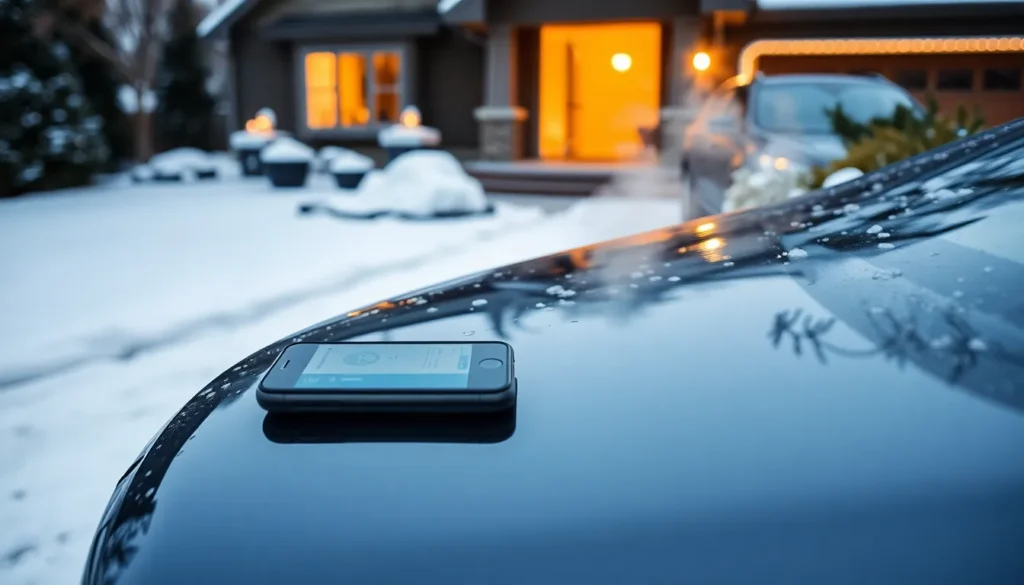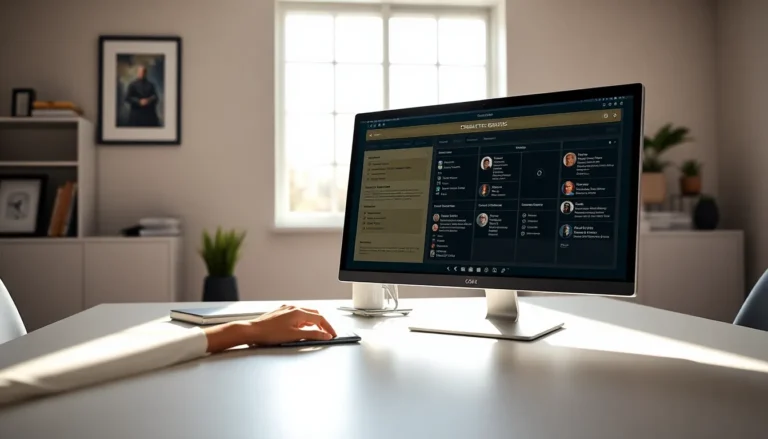Table of Contents
ToggleImagine stepping out into a frosty morning, your breath visible in the air, and knowing you can warm up your car without even leaving the comfort of your home. That’s the magic of remote start! It’s like having a personal butler for your vehicle, minus the bow tie and fancy mustache. But how does this nifty feature actually work?
Overview Of Remote Start
Remote start technology enables users to start their vehicles from a distance, enhancing convenience and comfort. Most systems utilize key fobs equipped with buttons that send signals to the car. By pressing the designated button, vehicles receive commands to initiate the engine.
Many modern remote start systems operate via smartphone apps. These apps communicate with the vehicle through cellular networks or Bluetooth, providing control over engine start and other features from anywhere. Users can not only start their cars but also monitor the vehicle’s status and adjust climate settings.
Security remains a significant advantage of remote start systems. Features such as engine immobilization prevent unauthorized access, ensuring that only the registered key fob or smartphone app can operate the engine. This adds an extra layer of protection when parked.
Compatibility plays a crucial role in the functionality of remote start systems. Most aftermarket kits support a wide range of vehicles but checking for specific vehicle model compatibility remains essential. Installation often requires a professional for seamless integration, ensuring proper wiring and function.
Various types of remote start options exist, including one-way and two-way systems. One-way systems only allow users to send commands to the vehicle, while two-way systems provide feedback, such as alerts when the engine starts. Users can choose based on their preferences for convenience and communication.
Through understanding how remote start works, owners can enjoy enhanced vehicle control, comfort, and security. The technology exemplifies how modern features can significantly improve user experience in automotive settings.
How Remote Start Works

Remote start technology involves several key components that work together to provide convenience and security. The primary component includes a remote starter or an aftermarket kit, which interfaces with the vehicle’s ignition system. Key fobs contain buttons to send signals to the vehicle, while modern systems often include smartphone apps for remote access. Another important element includes the vehicle’s onboard computer, which interprets the signals and manages the starting process.
The communication process initiates when the user presses a button on the key fob or app. This action sends a signal via radio frequencies or cellular networks to the vehicle. The vehicle’s receiver picks up this signal and verifies the command with the onboard computer. Once authenticated, the vehicle starts, allowing the engine to run without a physical key in the ignition. Users can also adjust climate settings and monitor vehicle status in real-time during this communication process.
Benefits Of Remote Start
Remote start technology offers several advantages that enhance the overall driving experience. Users can appreciate these benefits, especially in varying weather conditions.
Convenience
Remote start provides significant convenience for vehicle owners. It allows individuals to warm up or cool down their cars while still inside their homes or offices. Pressing a button on a key fob or tapping a smartphone app initiates the process, making it easy to prepare the vehicle before stepping outside. Long commutes become more bearable, as drivers enter comfortable temperatures right away. Additionally, remote start systems often enable users to check vehicle status and monitor essential functions from afar. These features save time and effort, allowing for a seamless transition from home to car.
Security Features
Security features associated with remote start enhance peace of mind for vehicle owners. Most systems include engine immobilization, which prevents unauthorized access and theft. A vehicle that starts only when a valid key fob signal is received establishes a stronger barrier against potential intruders. Two-way systems provide feedback, notifying users when their vehicle has been successfully started or if any issues arise. Many modern remote start systems integrate GPS tracking, so owners can easily locate their vehicles if necessary. These robust security measures make vehicles safer while providing additional layers of protection for owners and their belongings.
Common Misconceptions
Many people believe that remote start systems can only be installed in newer vehicles. Compatibility exists for various makes and models, including older vehicles, provided appropriate aftermarket kits are selected. It’s vital for users to verify their vehicle’s compatibility prior to installation.
Another misconception involves the belief that remote start systems can easily be hacked. Robust security features such as encryption and engine immobilization ensure that the vehicle remains secure from unauthorized access. These systems employ advanced technology to protect the user.
Some assume that remote start engines run indefinitely once activated. However, most systems will only allow the engine to run for a predetermined duration, typically ranging from 10 to 20 minutes. After this time, the engine shuts off unless the key is turned in the ignition.
There’s also a thought that a remote start is ineffective in extreme weather conditions. In reality, these systems are designed to operate in a range of temperatures, providing heat or air conditioning as needed. This feature promotes comfort regardless of the climate.
Many users think that remote start technology drains the vehicle’s battery quickly. While the engine idles for warming or cooling, the battery usage remains minimal, preserving overall vehicle performance. It’s crucial for vehicle owners to maintain their batteries well for optimal functioning.
Lastly, some people believe remote start systems only function with specific brands of smartphones. Many modern systems operate via Bluetooth or cellular networks, allowing broader compatibility across different devices. Users should confirm their system’s specific operational capabilities.
Remote start technology has transformed the way vehicle owners interact with their cars. By combining convenience and security, it offers a seamless experience that enhances comfort during extreme weather. Users can effortlessly start their vehicles and adjust climate settings from afar while enjoying peace of mind with advanced security features.
As technology continues to evolve, remote start systems are becoming increasingly accessible across various vehicle models. Understanding the functionality and benefits of these systems empowers users to make informed decisions about their vehicle’s capabilities. Embracing remote start technology not only improves daily commutes but also elevates the overall driving experience.




